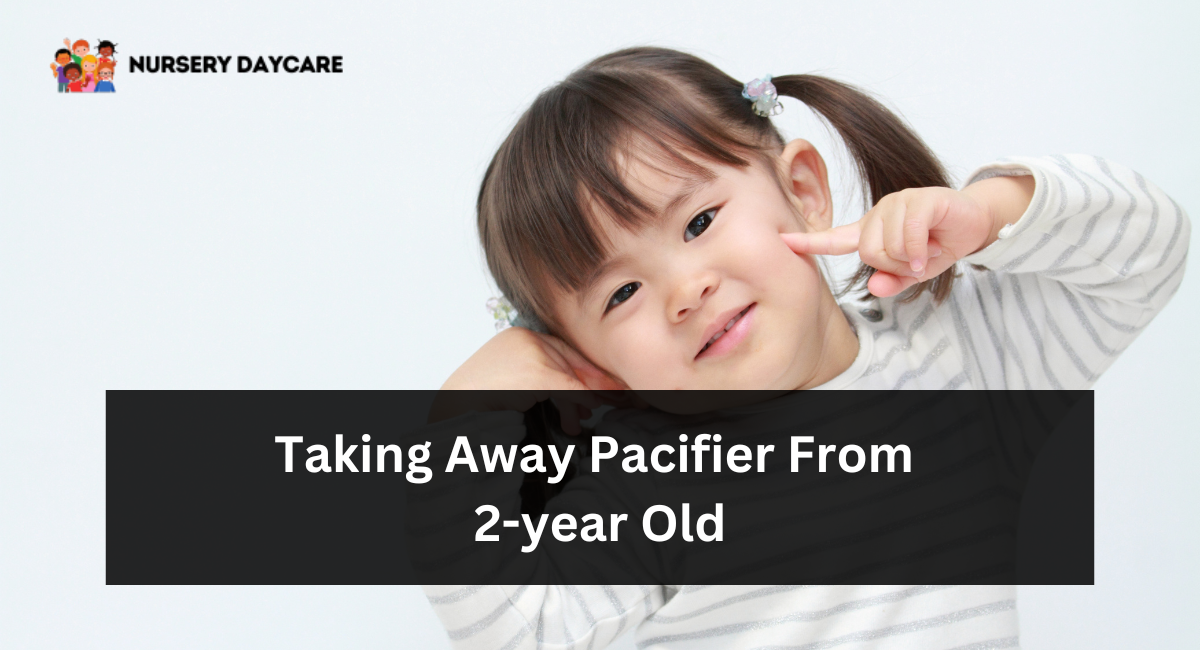No matter what method you take to end binky use, it is vitally important that all caregivers, including grandparents and daycare workers, understand this decision to avoid surprises when the binky is gone.
Broda says some kids respond well to paci-weaning techniques that involve wrapping the pacifiers up and “gifting” them to another infant friend as part of an early withdrawal method.
Set Up a Paci-Free Zone
Some parents find it helpful to limit pacifier use at home to ease the process of weaning off it. Restricting their usage helps limit how often they turn to it – and thus facilitate weaning off its usage altogether.
Some children need extra support during this transition period. Though they may scream or cry for their pacifier, their caregiver must remain firm and supportive – snuggle with them, give massages or play soothing music as needed.
Rewards may also help ease the process. This could include taking them out for an enjoyable treat, buying something special, or reading books that encourage giving up their pacifier.
Some kids like to enlist the assistance of the Pacifier Fairy, much like how kids engage the Tooth Fairy for tooth fairy services, to come in the middle of the night to take away their binky and leave behind something special as compensation. Others leave it somewhere for her (either under their pillow or crib).
Reward Your Child for Using Their Mouth
According to Brauning, pacifiers can present both advantages and disadvantages to breastfeeding and oral health. Sucking on a pacifier may distract babies from nursing sessions, with studies linking its use with higher rates of ear infections in infants.
Sucking may also increase the chances of sleep disturbance if the device goes missing overnight and could even prompt your child to start sucking their thumb or fingers for comfort, according to Brauning.
If you decide to give your baby a pacifier, make sure it is sterilized and offered only during naps or bedtimes – never tie it around their neck, as this could cause strangulation.
In addition, try weaning them off before their second birthday so they can learn other self-soothing methods such as sensory play or play therapy; remember patience and firmness will be required – avoid punishment or humiliation as this will only further entrench themselves as attachment mechanisms for them!
Set a Paci-Free Date
If your toddler has become attached to their binky, consider gradually weaning them off rather than abruptly taking them away. Give a warning and help your child understand the change by discussing and counting down with a calendar or similar visual aids.
Your toddler may benefit from hearing stories or reading books about children who were similarly attached to their pacifiers and eventually gave them up, which can help ease anxiety about this new experience. Another possibility would be engaging the Binky Fairy; she can take away their pacifier and leave behind something as compensation (don’t mention other babies – that could spark jealousy!).
Be prepared for tears as they struggle with this change, and provide them with comforting words and support as they focus on other activities or a favorite lovey that could serve as a replacement pacifier.
Make It a Game
Many toddlers aren’t ready to give up their pacifier, especially if they frequently cry for it at night. In such instances, be sure to consult both a pediatrician and dentist beforehand before making this transition.
Do not introduce it suddenly–this could lead to anxiety and confusion about the transition. Instead, gradually reduce its availability by permitting it only at naptime and bedtime.
Make the process enjoyable. Many parents report that their children will willingly let go of their pacifier if they use it in a game with them.
One parent told their child they would send their pacifier directly to Santa in exchange for all the presents he would bring on Christmas morning. You could also tell your child their pacifier will go to someone in need; explain why this decision is best.
Conclusion:
Taking away the pacifier from your 2-year-old is a milestone that can be both challenging and rewarding. As you navigate this transition, remember that every child is unique, and the process may unfold differently for each.
Celebrate the small victories, be patient with setbacks, and offer comfort during this adjustment period. The decision to part ways with the pacifier marks a step towards growth and independence.
With consistent routines, comforting alternatives, and a supportive environment, you’ll find that saying goodbye to the pacifier becomes a positive experience for you and your child. Cherish the moments of comfort and connection that arise in new ways, and trust that you’re guiding your little one towards healthy habits.
The pacifier may be gone, but your love and understanding remain constants in your child’s journey. Here’s to embracing new stages and nurturing your child’s development with patience and love.

Leave a Reply